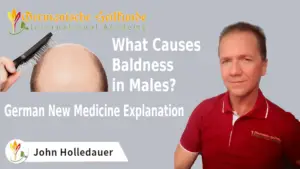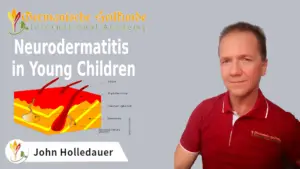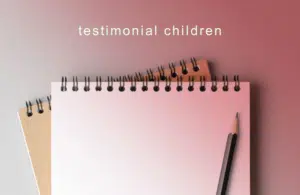
For centuries, numerous myths and explanatory models have existed regarding the meaning and cause of warts. If you remove them surgically, they will consistently return. But there are also cases where a wart disappears on its own, so there must be a mechanism that causes a wart and can also make it go away again. After watching this short video, you will also know this mechanism.
The wart is hanging healing of a separation conflict concerning the outer skin.
The outer skin is the squamous epithelium, red group. No matter what the symptom of the outer skin is called, whether it is neurodermatitis, eczema, cold sore, or just wart – it is always a separation conflict of something living, that is human or animal.
There are two kinds of separation conflicts. Either one wants to be separated; then one has the symptoms on the outside of the organ: the back of the hand, the outside of the thigh, or the back.
Or one does not want to be separated; then one has the symptoms on the inner side of the organ, that is, the palm of the hand, the sole of the foot, the abdomen, and the inner side of the thigh. The scalp belongs to the inner organ side, so you don’t want to be separated.
Regardless of the handedness, there is also the local separation.
For example, one pushes off with the palms. So you can have the symptoms on the inside of the hand even if you want to be separated.
In the active phase, the outer skin ulcerates. An ulcer on the thin epidermis can be thought of as scratching something out of the wallpaper with your fingernail. So the outer skin is rough and scaly in the active phase. If, for example, the child’s contact with the mother is broken off, the child’s outer skin is rough, like a glue spot that has been torn open.
The biological sense of the squamous epithelium (red group) is always in the active phase. Here, however, the biological sense is not so much skin ulceration but rather a sensory paralysis. At the site where the contact breakage was associated, one feels less. In the active phase, this spot is numb.
And one has impaired short-term memory. Both, impaired short-term memory and sensory paralysis help in the active phase to forget the person from whom one was separated or wanted to be separated. Alzheimer’s is many or severe separation conflicts.
So the active phase is less noticeable. On the other hand, the healing phase is painful, with itching. The ulcers are refilled with swelling and inflammation until the crisis.
The crisis in the squamous epithelium is always absence. ?One is absence during the Absence and does not react?. Mainly the crises occur around 04:00 a.m. If you have an absence during sleep, it is usually not noticed.
During the crisis, the outer skin is sensory paralyzed again. So the crisis does not hurt. After the crisis, the swelling and inflammation go down, and the outer skin is entirely asymptomatic again. Sensibility has returned.
In the healing phase, therefore, the squamous epithelium builds back what had been degraded in the active phase. If one now enters a hanging healing phase, the squamous epithelium is built up and built up and built up. This then leads to the symptom of the wart, regardless of what this wart is called, whether it is a plantar wart, a genital wart, or a dell wart. The mechanism is always the same.
So, in the case of the wart, we must look for a separation conflict.
If it is on the outside of the organ, then the person wanted to be separated conflictively. If it is on the inside of the organ, then the person does not want to be separated.
Is it on the partner or mother/child side?
When was it noticed for the 1st time? This is where you have to look for this separation conflict in terms of time.
A father tells the following story. He was with his wife at one of my seminars, and they thought about whether they could implement what they had heard at home. Their eleven-year-old son had had a wart on the sole of his foot for years, which was getting bigger and bigger and was already affecting him considerably when he walked.
The son was left-handed. The wart developed during the period when he was enrolled in school about five years ago. The wart was on the sole of his right mother/child’s foot. The sole of the foot means not wanting to be separated, so in that case, from his mother.
His father asked his son: “Can you remember a separation conflict with your mother at the beginning of the first grade?
The boy spontaneously answers: Yes, it was the 1st day of school. All the mothers stayed with their children in class!
And turning to the mother, he said: And you went home. You were not there!
That was the separation conflict with the boy! He did not want to be separated from his mother!
The track is evident here: the school WITHOUT mother! When he went to school the place on his foot ulcerated. When he was at home with his mother, the spot went into solution, and the squamous epithelium built up. If he went back to school, it started all over again. In out, in out. The hanging healing.
Today you are in the first grade of secondary school and won’t want your mother to sit next to you.
The boy: No! No more today! And the plantar wart disappeared!
The boy realized that he was no longer the boy from the 1st-grade elementary school. And if the mother would sit next to him in class today, it would be very embarrassing to his classmates. The conflict was brought from the subconscious to the boy’s consciousness by the father’s clever question and recognized as irrelevant, whereby the conflict and the track immediately disappeared into thin air.
A brilliant case study for which I would like to thank this father once again.
You see, dear friends, how simple it can be! Keep strictly to the procedure that Dr. Hamer taught us.
Have fun with further studying and goodbye
until the following video












| Cookie | Duration | Description |
|---|---|---|
| cookielawinfo-checkbox-analytics | 11 months | This cookie is set by GDPR Cookie Consent plugin. The cookie is used to store the user consent for the cookies in the category "Analytics". |
| cookielawinfo-checkbox-functional | 11 months | The cookie is set by GDPR cookie consent to record the user consent for the cookies in the category "Functional". |
| cookielawinfo-checkbox-necessary | 11 months | This cookie is set by GDPR Cookie Consent plugin. The cookies is used to store the user consent for the cookies in the category "Necessary". |
| cookielawinfo-checkbox-others | 11 months | This cookie is set by GDPR Cookie Consent plugin. The cookie is used to store the user consent for the cookies in the category "Other. |
| cookielawinfo-checkbox-performance | 11 months | This cookie is set by GDPR Cookie Consent plugin. The cookie is used to store the user consent for the cookies in the category "Performance". |
| viewed_cookie_policy | 11 months | The cookie is set by the GDPR Cookie Consent plugin and is used to store whether or not user has consented to the use of cookies. It does not store any personal data. |
You’ll be informed by email when we post new articles and novelties. In every email there is a link to modify or cancel your subscription.